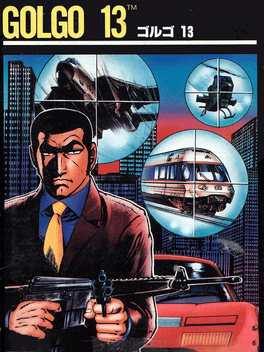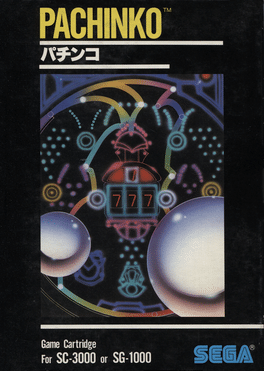New Sg1000 Games - Page 3
-
Golgo 13
1984
-
Congo Bongo
1983
-
Cabbage Patch Kids
1983
-
Q*bert
1983
Q*bert
1983
Q*bert is an arcade game by Gottlieb. It was ported to the SG-1000 by Tsukuda Original, who marketed it for their Othello Multivision console. The objective of the game is to turn all the cubes on screen to a desired colour by moving Q*bert on top of them. Q*bert can only move in diagonals, and the player needs to be careful not to either send Q*bert off the edge or have him collide with enemies/obstacles. Occasionally cylindrical platforms appear on the edge of the screen, which when jumped on, will take Q*bert to the top. The SG-1000 port is a very bare-bones rendition of the game and is missing many elements seen in the arcade version. It is also much harder as the port sends out more enemies in the first few levels. -
Mahjong
1983
-
Pachinko
1983
Pachinko
1983
Press 1 on the alpha-numeric keyboard. A giant Pachinko game appears on your TV. You and your opponent are at the lower part of the screen. The digital readout scoreboard will appear at the bottom of the screen when play begins. The left hand control maneuvers the player at the left. The right hand control maneuvers the player at the right. Push the joystick left to go left. Push it right to go right. You can play another person or the computer. To signal the computer you're in the game, press the action button or move the joystick of your hand control in any direction. If the computer does not get a response from either of the hand controls, it will play by itself. Each of the players on the screen has an energizer. Press the action button to flip up your energizer and hit one of the balls. When you hit the ball with your energizer, it will change to your color and rocket back into play. If your energizer is completely raised when it hits, the ball will continue its same horizontal direction. If you -
Pacar
1983
Pacar
1983
Pacar is an SG-1000 game initially released in 1983. It is essentially a mix between two Namco games; Pac-Man and Rally X. It is the sequel to Head-On, which was released a year before Puck-Man. However, Pacar is more-so a clone of Puck-Man than a true Head-On sequel. The player controls "Pacar", a "mischievous" green car through a maze of roads. The objective of the game is to "delete" all of the small red "dots" scattered around the playfield, building up points for a high score. The joystick allows Pacar to move in the proposed direction, assuming it is possible to do so. Like Pac-Man, Pacar does not stop moving unless it hits a wall, however unlike Pac-Man, it is not possible to rotate 180 degrees on the spot - moving in the opposite direction causes Pacar to reverse, and reversing is significantly slower than driving normally. Ideally the player should plan his or her route to avoid reversing altogether. 1 or 2 allows Pacar to move faster across the board. Driving off the edge of the screen makes Paca -
Champion Golf
1983
-
Serizawa Hachidan no Tsume Shogi
1983
Serizawa Hachidan no Tsume Shogi is a 1982 arcade game by Sega. It was subsequently ported to the SG-1000. The arcade version is extremely rare and poorly documented. -
Sega Mahjong
1983
-
Safari Hunting
1983
Safari Hunting
1983
Tranquillizer Gun is a 1980 arcade game developed by Sega for VIC Dual hardware. It has the player control a hunter, who must make his way around a maze, shooting animals and dragging their bodies back to his truck. The game was brought to the SG-1000 as Safari Hunting by a then-just founded Compile with slightly updated graphics. It was also included as a minigame within Dynamite Cop. -
Space Slalom
1983
Space Slalom
1983
Space Slalom is a video game developed by Orca and published by Sega for the SG-1000 in 1983. Though on the surface it appears to be a space-themed vertical shoot-'em-up, there is actually no shooting involved. The player controls a shuttle and must navigate it through a course defined by colored stars, similar to ski slaloms. The player must also avoid obstacles, and will be awarded with extra points depending on on his/her speed across the course. At a mere 8kB, the game is one of the smallest SG-1000 games, and was only sold in Japan. -
Sega Flipper
1983
Sega Flipper
1983
Sega Flipper is a pinball game released for the SG-1000 in 1983. In New Zealand it is known as Video Flipper. It was one of the first pinball video games to be released, being released one year earlier than attempts from Jaleco and Nintendo but four years after Atari's Video Pinball. Unlike Video Pinball, however, Sega Flipper makes use of color. -
Champion Tennis
1983













